Hallerbos, known as the Blue Forest or Bluebell Forest, is a 552-hectare protected forest located south of Brussels, Belgium. It is composed of beech, oak, and birch trees and is famous for the striking carpet of bluebells that bloom every spring, transforming the forest floor into a sea of violet-blue flowers. The bluebells typically bloom for 7-10 days in April or May, creating a fairytale-like scene under the forest’s canopy. Hallerbos is home to a diverse range of plant and animal species, including over 100 bird species, foxes, deer, squirrels, and various insects and amphibians. Apart from the bluebell season, the forest offers opportunities for outdoor activities like hiking, cycling, and horseback riding.
Contents
- What is Hallerbos, the Blue Forest?
- Where is Hallerbos?
- What is the history of the Blue Forest of Hallerbos?
- What are the visiting hours of Hallerbos?
- When is the Best Time to Visit Hallerbos?
- What are the walking routes in Hallerbos?
- How much is the Entrance Fee for Hallerbos, the Blue Forest?
- How long is the typical visit time in Hallerbos, the Blue Forest?
- How to get to Hallerbos, the Blue Forest?
- What are the facilities in Hallerbos?
- Is it worth it to visit Hallerbos, the Blue Forest?
Hallerbos forest is accessible by public transportation, with a short train ride from Brussels to Halle Station followed by a walk or bus ride to the forest. Visitors can also rent bicycles at Halle Station for a scenic ride to Hallerbos. Hallerbos has a rich history dating back over a thousand years, originally being part of the ancient Silva Carbonaria forest. After being heavily logged during World War I, it was later reforested and opened to the public.
Hallerbos forest is open 24 hours a day, 7 days a week, with visiting hours from 7 am to 10 pm. The best time to visit is during the bluebell bloom in mid-April to early May, but the forest offers different attractions in each season. Visiting Hallerbos is safe, and there are no entrance fees. Visitors can stay as long as they like, with the typical visit lasting 1 to 3 hours. The forest is easily accessible by train, bus, or car. Visiting Hallerbos is considered absolutely worth it, especially during the bluebell bloom, which creates a unique and enchanting experience.
What is Hallerbos, the Blue Forest?
Hallerbos, also known as the Blue Forest, is a protected forest area in Belgium, located just south of Brussels. Hallerbos covers 552 hectares (1363 acres), it’s primarily composed of beech, oak, and birch trees. The forest earned its nickname “the Blue Forest” due to the striking carpet of bluebells that bloom there every spring. During this brief period, the forest floor transforms into a sea of violet-blue flowers, creating a captivating, fairytale-like scene under the towering trees. The bluebells typically bloom for 7-10 days in April or May, depending on the weather and the amount of sunlight reaching the forest floor.
Hallerbos is a home to a diverse range of plant and animal species. Over 100 bird species, as well as foxes, deer, squirrels, and numerous insects and amphibians, inhabit this ecosystem. Beyond the bluebell season, Hallerbos offers opportunities for hiking, cycling, horseback riding, and other outdoor activities.
Hallerbos is accessible by public transportation, with a train ride from Brussels to Halle Station taking just 15 minutes, followed by a short walk or bus ride to the forest. Visitors can also rent bicycles at Halle Station for a scenic ride to Hallerbos. For those driving, the E19 Motorway provides easy access to the forest, and parking lots are available at various locations around its perimeter.
Where is Hallerbos?
Hallerbosis is located in 1500 Vlasmarktdreef, in the town of Halle, which is approximately 15 miles (25 km) south of Brussels, the capital of Belgium. The forest sits between the Zenne River and the Sonian Forest, another large forested area outside of Brussels. It falls mostly within the province of Flemish Brabant, with a small section crossing over into Walloon Brabant. The ancient woodlands of Hallerbos form part of a larger forest that once stretched all the way from the Rhine River to the North Sea during the Middle Ages. It covers 1,363 acres (552 hectares) of that original old-growth forest. The forest can be accessed from several marked parking areas around its perimeter or by public transportation via bus or train to Halle.
When was Hallerbos opened to the public?
Hallerbos has been accessible to the public in some form for many centuries, but its precise origins as a public forest are unclear. As part of the ancient Silva Carbonaria forest that once spanned from the Rhine River to the North Sea, locals have likely accessed the Hallerbos woods for foraging, hunting and nature enjoyment since medieval times or earlier.
During World War I, the German occupying force heavily logged Hallerbos, cutting down much of its old growth trees. As compensation after the war ended in 1918, the Belgian government took ownership of the devastated land in 1929. From 1930 to 1950, massive reforestation efforts helped rebuild Hallerbos with native beech, oak and birch trees. Since at least this reforestation period 90 years ago, if not earlier, Hallerbos has been open to and enjoyed by the public as a scenic natural woodland getaway so close to Brussels.
What is the history of the Blue Forest of Hallerbos?
The Blue Forest of Hallerbox was first referenced in records from 686 AD when it was part of lands owned by the Abbey of Sainte Gertrude. For centuries, it was part of a massive ancient woodland known as the Silva Carbonaria or Charcoal Forest that extended from the rivers of the Rhine and Moselle all the way to the North Sea. This primeval forest originally marked the boundary between the Roman provinces of Germania Inferior and Gallia Belgica.
After the fall of the Roman Empire, the Silva Carbonaria became the divide between French and Dutch speaking regions, with the former south of the forest and the latter to the north. The forest was cleared repeatedly over the centuries as towns grew and farmland expanded. By the 18th century, Hallerbos was split between the Duke of Arenberg and the Abbey of Arenbergs. However, it still remained connected to the ancient Sonian Forest near Brussels by a strip of woodland.
This connection was severed when the forest was heavily logged by occupying German forces during World War I. Nearly all the original old growth trees were removed, leaving only a fraction of the pre-war woods. In 1929, the Belgian government took ownership of Hallerbos from the Arenberg family as compensation for the damage during the war. An extensive reforestation project was undertaken between 1930-1950 to rebuild the forest, which is primarily beech, oak and birch today. The bluebells carpeting the forest floor each spring are original remnants that have persisted in the forest for centuries. Hallerbos remains a popular destination today for experiencing this magical display of natural beauty.
What are the visiting hours of Hallerbos?
Hallerbos is open 24 hours a day, 7 days a week. There is no entrance fee or tickets required. Visitors can access Hallerbos at any time of day or night for hiking, cycling, horseback riding and other recreational activities. While the forest is open around the clock, standard visiting hours tend to be between 7am and 10pm daily. Visitation is highest during daylight hours when the trails and natural scenery can be enjoyed and appreciated.
When is the Best Time to Visit Hallerbos?
The best time to visit the Hallerbos Forest is during the bluebell bloom every mid-April to early May, for about 7-10 days. The months of March and April herald the arrival of early spring flowers, such as daffodils and wild garlic. In May and June, the forest is green and in the summer, from July to August, it provides a cool, shady refuge. As autumn arrives, the landscape is aflush with a spectrum of fall colors from September to October, while from November to February, the woods offer a quiet, serene atmosphere in their winter dormancy.
I went on a Wednesday morning/noon and while there were already lots of cars when I arrived, it wasn’t too busy in the Hallerbos. The blue forest is 552 ha big, so it’s not as if everyone is walking in the same little area.
What are the walking routes in Hallerbos?
There are different walking paths spread throughout the Hallerbos and visitors are urged not to stray from them, so that the flowers are protected. People who want to film or organize a photoshoot during the blooming season need to ask permission to do so, but it’s no problem if you just want to take your camera (and tripod) to get some shots of the flowers.
There are several free parking areas around the forest, and at every Hallerbos parking ground, there’s an information sign indicating the walking routes through the Hallerbos, but if you want to follow the bluebells route, you need to download it from the website.
That route combines parts of the other walking routes to talk you along the places where most of the bluebells can be seen, but you can spot the flowers in other parts of the Hallerbos as well.
Another option is to follow one of the all-year-round walking routes through the Hallerbos. I’ve heard the “Reebokwandeling” is the best one to follow during bluebell season. It’s 7 km (4.4. miles) long and it’s a round walk, making it easy to find your way back.
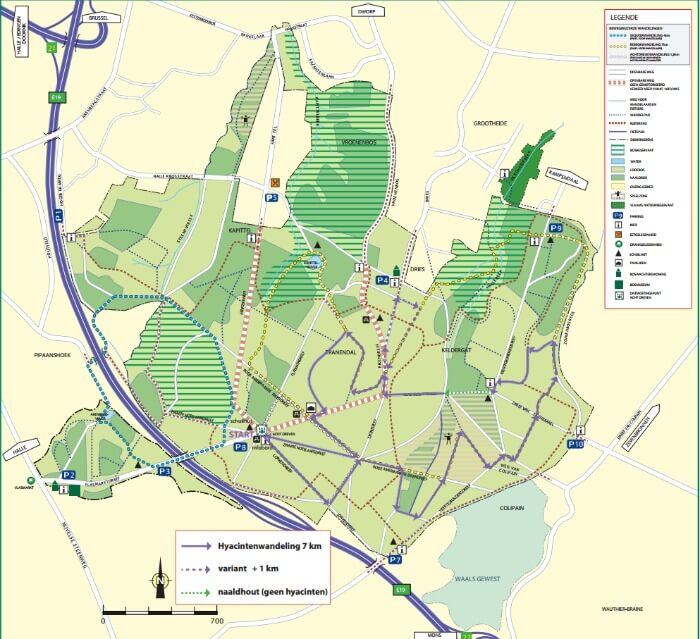
© Hallerbos.be
When I went, I parked at P1 and walked toward P8 where the bluebells walk started. I took a different route on the way there than on the way back and both times spotted quite a bit of bluebells. These photos were taken on in a part of the blue forest that didn’t even include the bluebells route.
As you can see, there were plenty of bluebells to spot even off the route and so I took my time. I think I spent over an hour just walking from P1 to P8 photographing the bluebells along the way and diving into different paths.
Find below an image of the map because it is really handy to have with you. I saved it on my phone and found it much easier to navigate using the map than depending on the info signs. I also saw a bunch of people who’d printed this map, or who’d gotten a walking map of the Hallerbos at the Tourism Office of Halle.
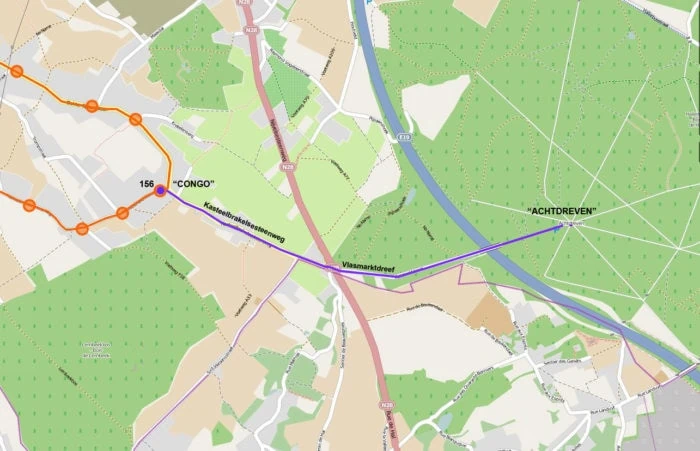
source: https://www.hallerbos.be/
Is it safe to visit Hallerbos, the Blue Forest?
Yes, Hallerbos is safe to visit. Hallerbos, as a public forest, receives thousands of visitors every year without major incident. Hallerbos presents no more inherent danger than any wooded natural area. Its vast popularity is a testament to how safely most visitors can explore the Blue Forest when basic precautions are taken. Visitors should use common sense, stick to trails, monitor weather, and enjoy this beautiful Belgian woodland safely.
How much is the Entrance Fee for Hallerbos, the Blue Forest?
There is no entrance fee to visit Hallerbos Forest. Hallerbos is a Belgian public forest and does not require tickets or payment to access the grounds for activities like hiking, cycling, horseback riding, etc. The absence of an admission fee makes Hallerbos an appealing destination for budget-conscious travelers and locals alike. The only costs involved would be transportation to get there and any incidentals like food or refreshments while visiting.
How long can you stay in Hallerbos, the Blue Forest?
There is no time limit on how long visitors can stay in Hallerbos Forest. As a public forest open 24 hours a day, guests are welcome to spend as much time as they wish exploring the natural scenery and trails throughout the wooded grounds. Visitors spend
I went on a Wednesday morning/noon and while there were already lots of cars when I arrived, it wasn’t too busy in the Hallerbos. The blue forest is 552 ha big, so it’s not as if everyone is walking in the same little area.
1-3 hours hiking or cycling the well-marked paths that wind through the 552 hectares (1363 acres) of Hallerbos. This allows enough time to stroll through the forest, pause to admire scenic overlooks, and photograph the flowers and wildlife along the way. During the roughly weeklong bluebell blooming season each April-May, some professional photographers even commit entire days to capturing this fleeting natural spectacle at just the right moment under optimal lighting conditions.
How long is the typical visit time in Hallerbos, the Blue Forest?
Visitors to Hallerbos Forest typically spend 1 to 3 hours for their exploration, it affords the opportunity to enjoy the scenic views, and capture photographs. From Vlasmarktdreef or Hogebermweg, explorers can traverse the woodland on foot or by bicycle along well-marked trails. Some of the favored trails include the 1.8 km Achtdreven loop, which is perfect for an hour’s stroll, and longer trails like the 4 km (2.49 miles), Sequoia Trail and the 7 km (4.35 miles) Roebuck Trail, each taking approximately 2 to 3 hours for the average walker.
For photography enthusiasts, a trek to the picturesque Tranendal valley might add an additional 30 to 60 minutes to their journey from the parking area. The bluebell trails, which range from 4.8 to 5.1 km, provide a 2 to 3-hour immersive experience in springtime, particularly sought after for their seasonal floral display.
How to get to Hallerbos, the Blue Forest?
Hallerbos is located just south of Brussels in Belgium and is easily accessible by public transportation or car. Here are some of the best options for getting to the Blue Forest:
- By public transportation: During the week travelers should take the train to Halle train station. From there, get on bus line 114, operated by TEC to halte “Vlasmarkt” on the Nijvelsesteenweg. From there you can walk to the entrance of the Hallerbos. During the weekend, visitors can take line 156 operated by De Lijn to stop “Lembeek Congo”. From there it’s still a 17-minute walk to the entrance of the Hallerbos.
- By bicycle: You can rent bikes at Halle Station and bike the 4.9 km (3 miles) to Hallerbos along a dedicated path. Cycling is a scenic and eco-friendly option.
- By car: From Brussels, take the E19 Motorway south. Exit at #10 toward Halle/Gaasbeek. Follow signs for Hallerbos.
What are the facilities in Hallerbos?
There are some picnic tables at the Hallerbos, but that’s about it. There’s one bistro to the north of the forest, but there are no food and drink stands inside the Hallerbos, so bring water and maybe some snacks as well. And you’ll have to keep your trash with you as there are no garbage bins.
Keep in mind there are no toilets at the Hallerbos, so make sure you go to the toilet somewhere before starting your walk.
What to wear at the Hallerbos
Dress according to the weather. Even on a dry and sunny day, the paths can be muddy if there’s been a lot of rain before. Sturdy walking shoes or hiking boots are recommended.
What are the rules in Hallerbos?
Hallerbos has rules in place to protect the forest environment and create a safe, enjoyable experience for all visitors:
- Stay on marked trails at all times. Wandering into dense brush can present tripping hazards and an increased risk of wildlife encounters.
- Keep pets leashed and supervised. Much of the local wildlife is unused to dogs and may react aggressively or flee into hazardous terrain if chased.
- Beware of ticks from March to October. Use insect repellent and check clothing after hiking.
- Exercise caution near rivers and ponds. Steep, muddy banks can present drowning hazards, so watch out for children.
- Do not approach any wild animals. Do not feed any wild animals like deer or foxes that may appear along trails.
- Avoid visiting alone at night. Do not visit at night for your safety,
- Leave the forest unchanged. No picking or removing of any plants, flowers, mushrooms, etc.
- Camping and fires are prohibited. Fires are not allowed to protect the delicate ecosystem of the forest from potential damage and to ensure safety.
- Carry out what you carry in. No littering or dumping of waste.
- No photography. Photography and drones permitted but no commercial/professional use without a license.
If you are simply taking photos for personal use and to post on social media, you don’t need a photography permit. But if you’re looking to do a professional photo- or videoshoot, you need to request a permit. This applies to shoots both with and without models. You can find more information about getting a permit here.
Is it worth it to visit Hallerbos, the Blue Forest?
Yes, visiting Hallerbos, the Blue Forest is absolutely worth it. The stunning sea of bluebells that erupts in the forest for a short period each April/May creates a magical, fairy tale-like scene that makes Hallerbos one of the top attractions in Belgium. The bluebell phenomenon in Hallerbos only lasts about 7-10 days each year. It provides a visual spectacle not found anywhere else in the region.
PIN FOR LATER

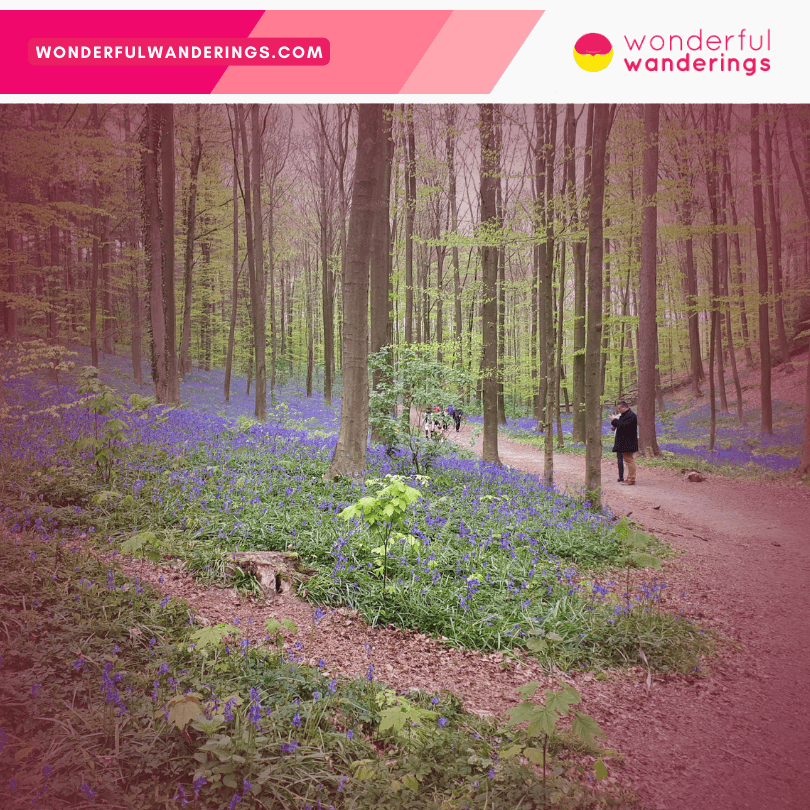
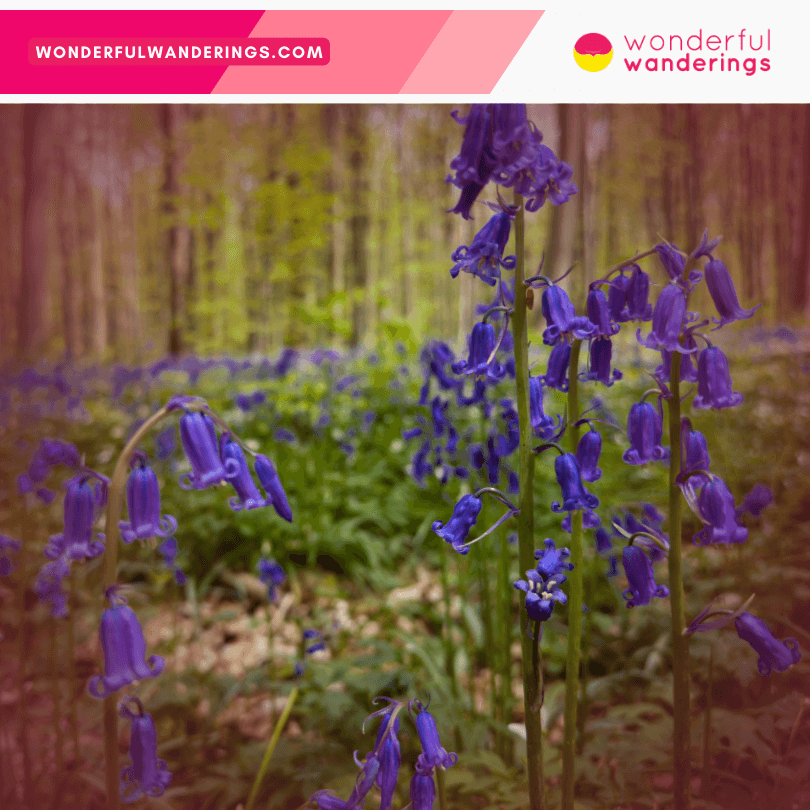
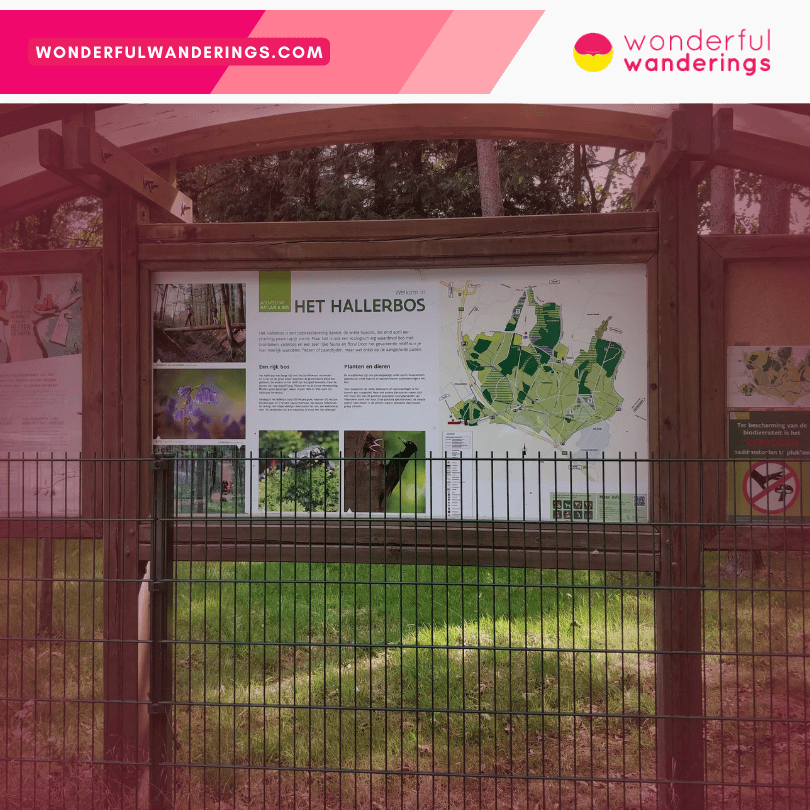
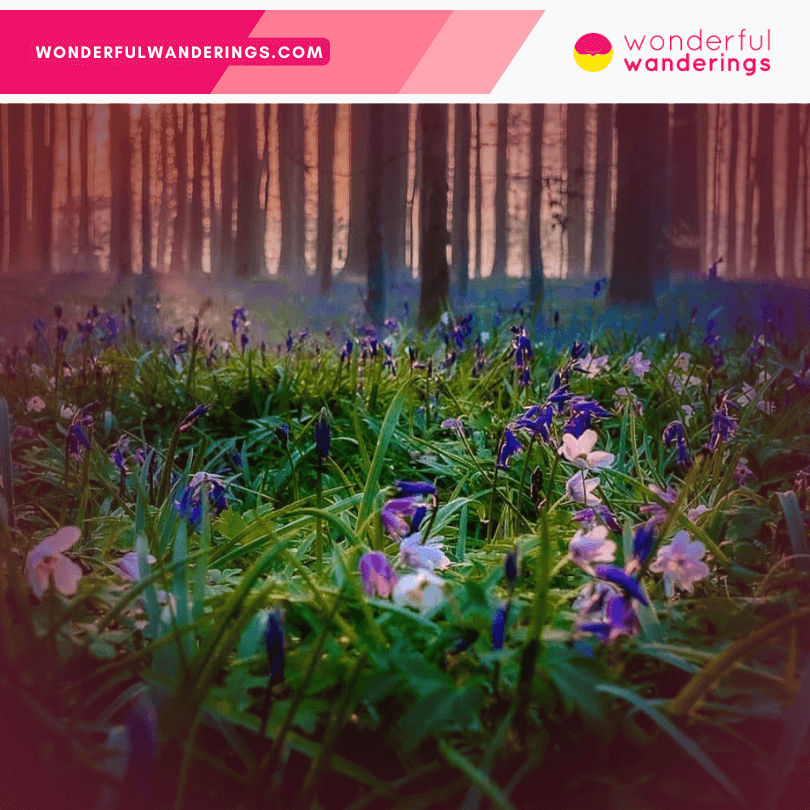
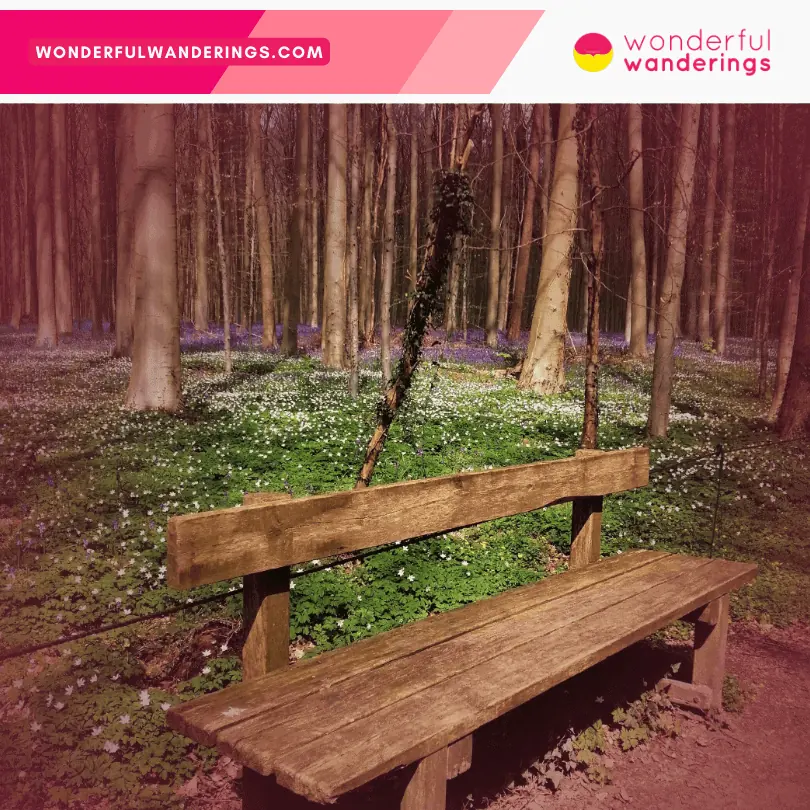
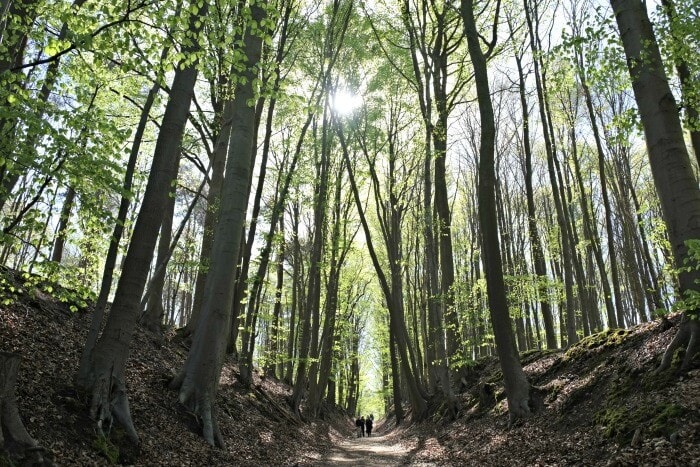
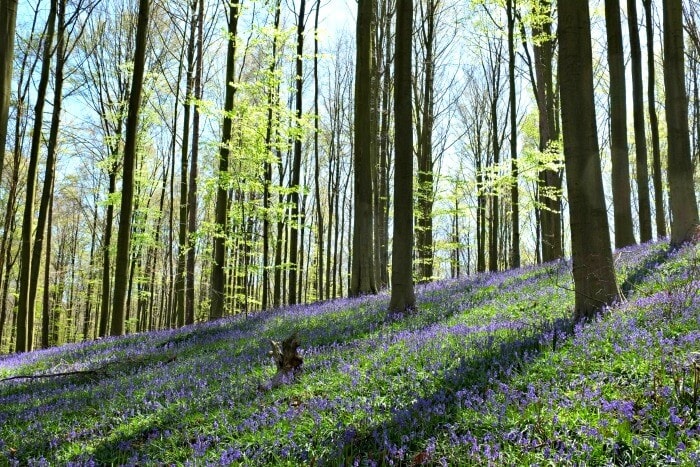
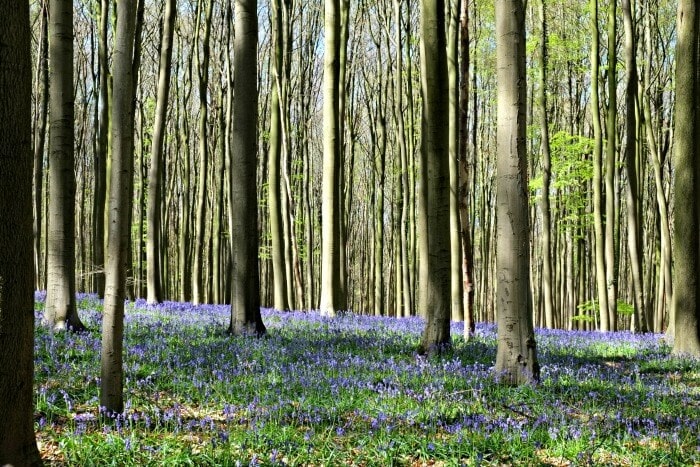
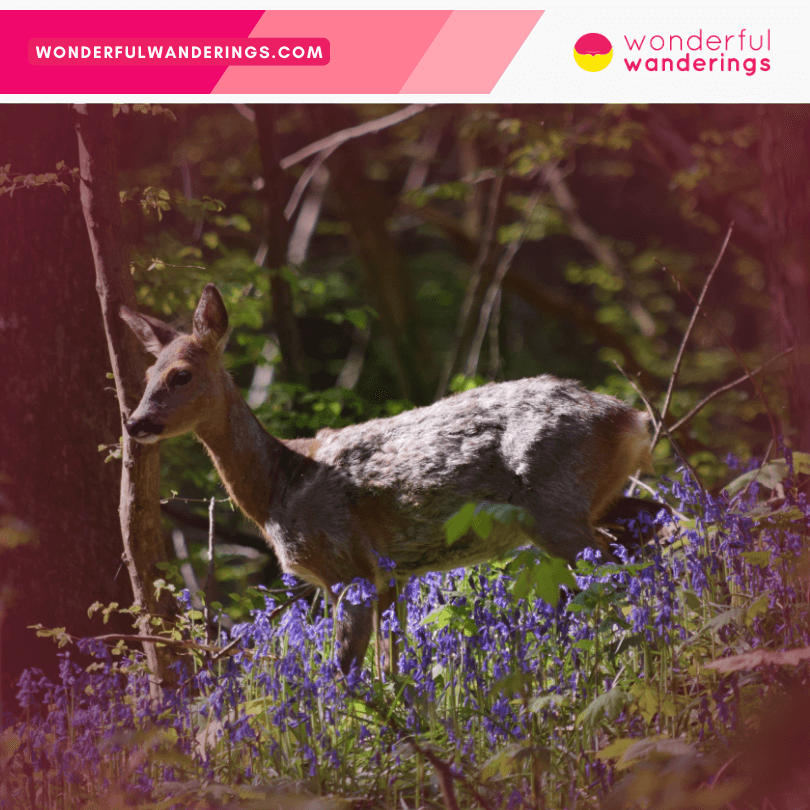
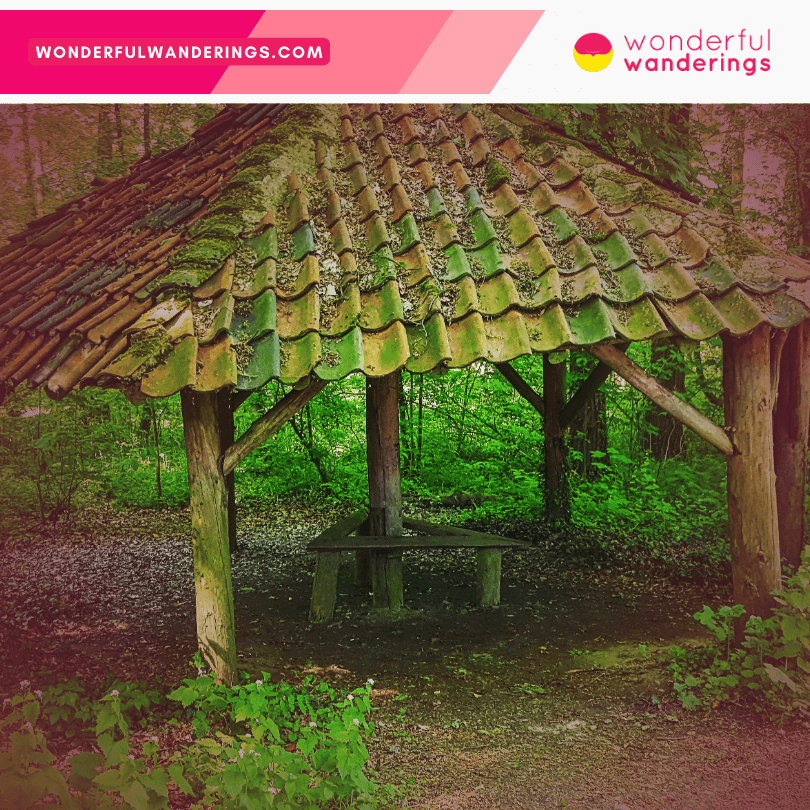
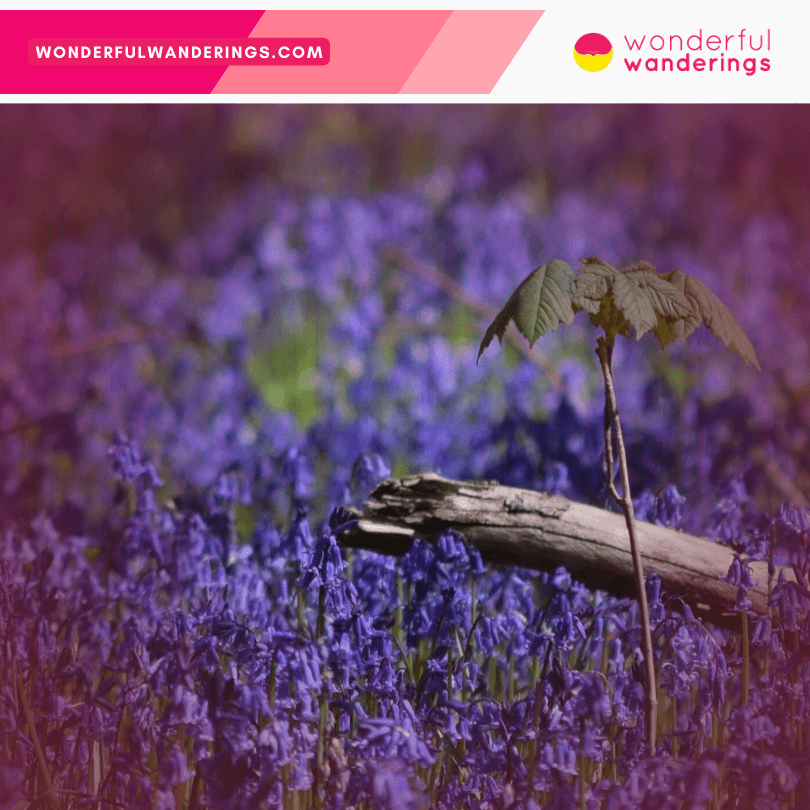
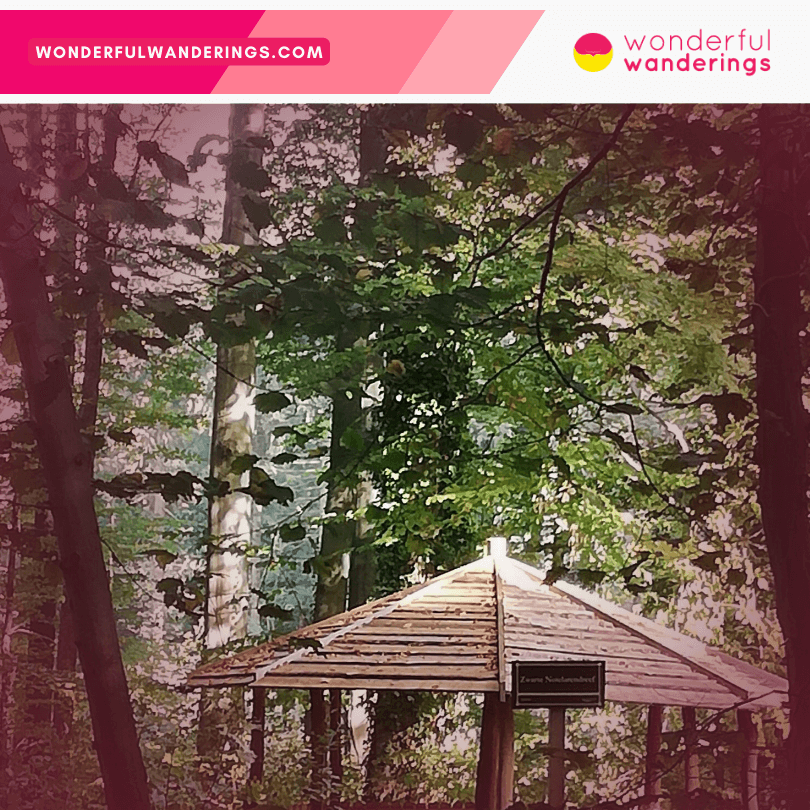
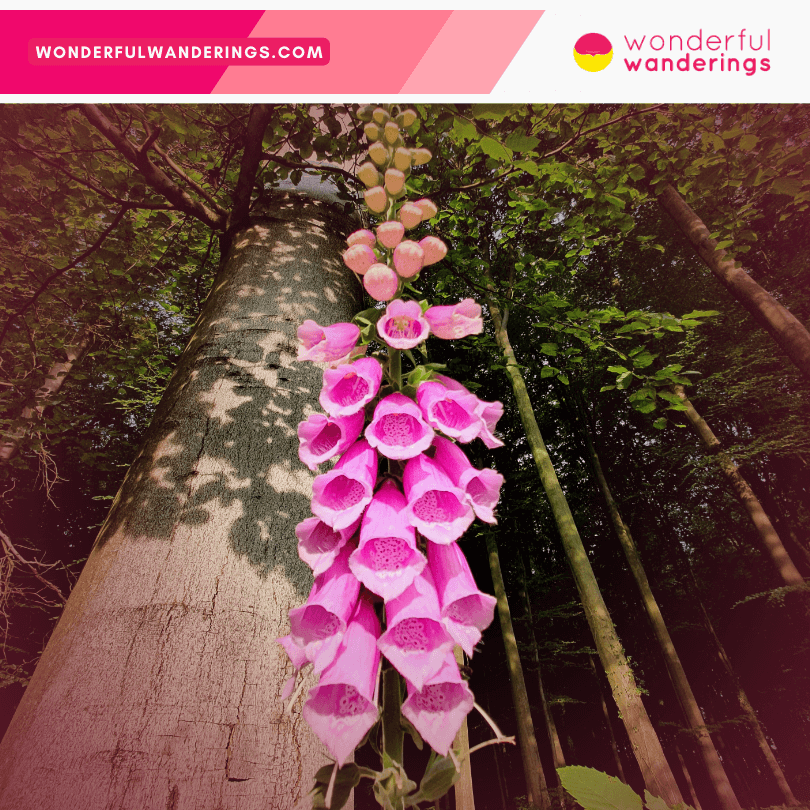
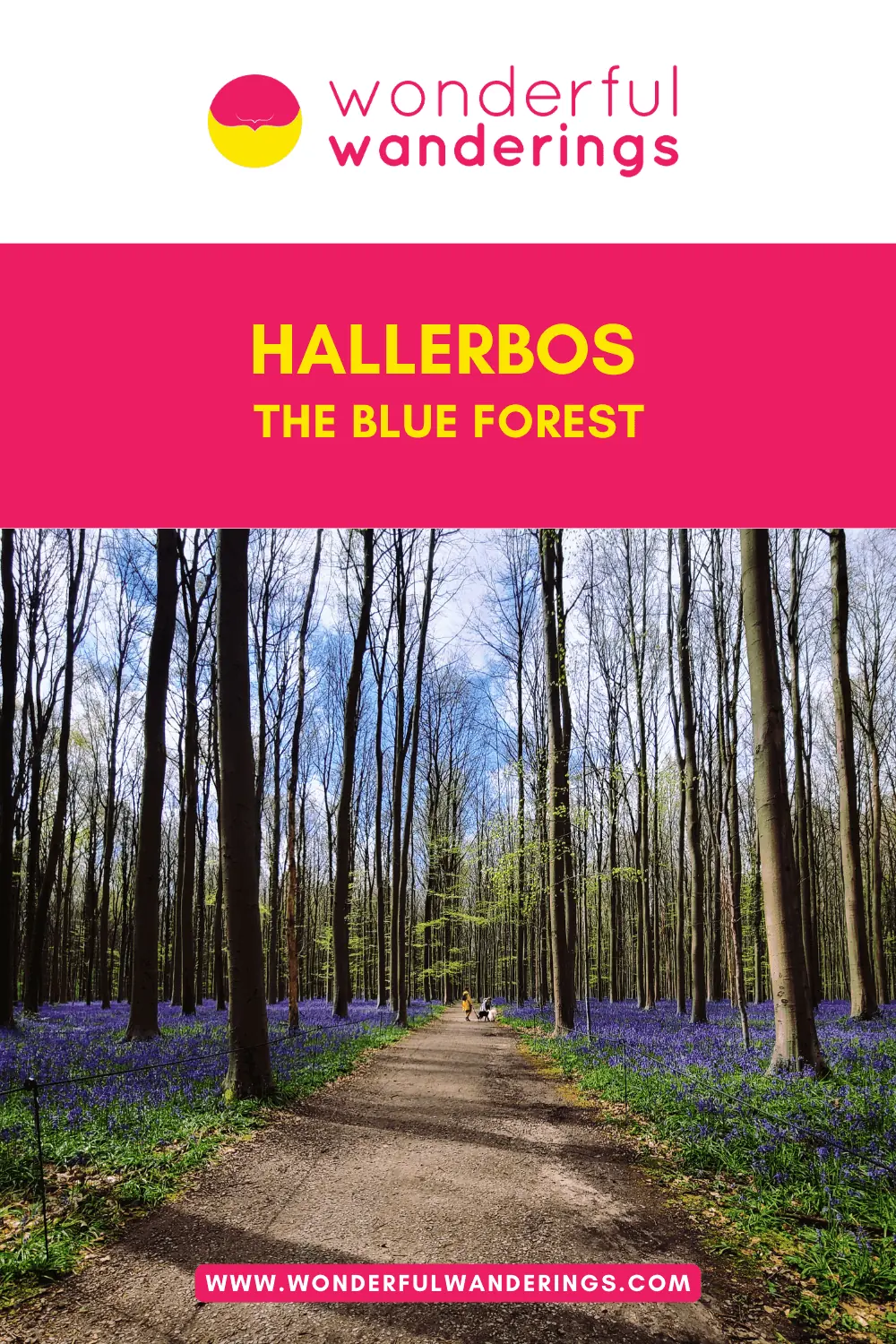

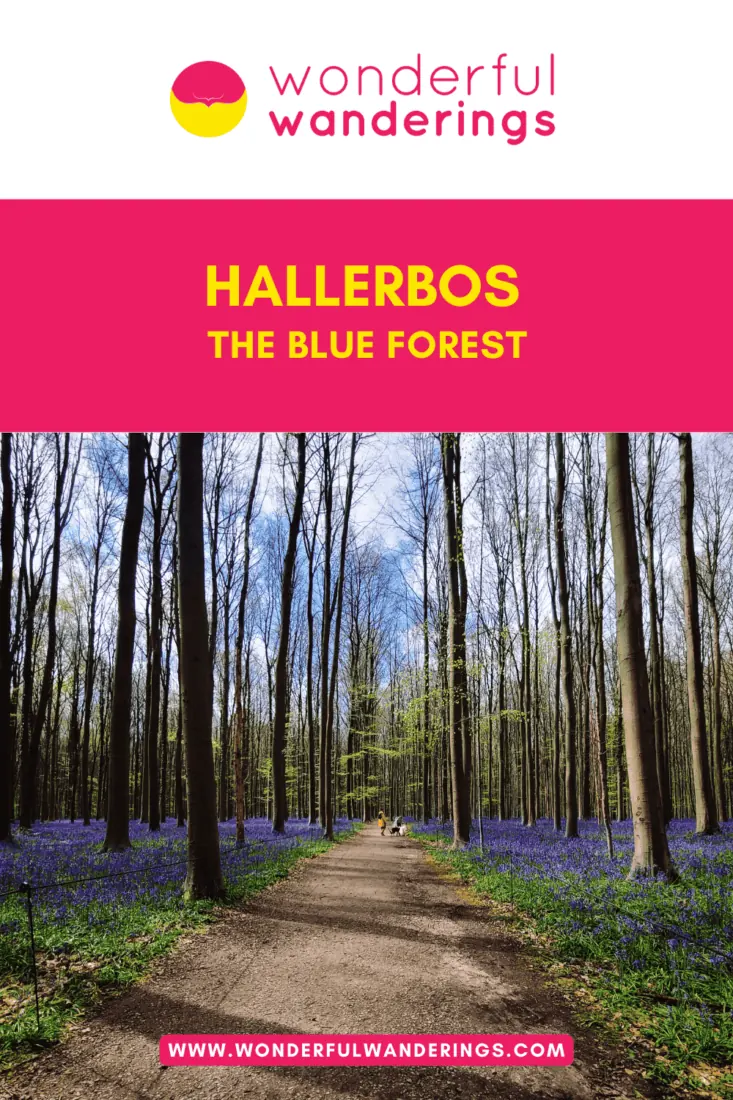
Lance says
Wow nice photos!:)
Sofie says
Thanks, Lance!
Travia says
Awesome! I was there last weekend and it was just breathtaking!!
People are still a little bit disrespectful of the forest though. Despite warnings to the contrary, in the quest for a good photo, we found some people just trampling on the poor bluebells. Sad!
Sofie says
Happy to hear you still got to see them last weekend!
Ugh, I can’t understand those people:/ I also saw a few wander off the paths, but usually not where there were any flowers. Either way, it’s unnecessary. You can get great shots from the paths as well and I think the most important thing when you’re there is to respect the nature surrounding you. It is, after all, what you’re visiting the forest for.
Diana says
Looks like a fun thing to do in the Spring … too bad I don’t get to your part of the world until this Fall :(
Sofie says
Oh that’s a shame! But there’s plenty to do in fall as well :) Will you be traveling around or just doing a quick city trip?
Lynette says
Hi Sofie, Love your blog. Can I ask how much time I should set aside in the park if I want to do the 7km trail?
Sofie says
Thanks so much Lynette!
I find that hard to answer as everyone walks at a different pace and you might want to stop often for photos while others would just walk through.
Lynette Chang says
I suppose an average, not too fast walk with photo stops for sure. I just need to know how much time to apportion for this excursion!
Sofie says
It’s really impossible to tell :) But I’d advise at least two hours to properly enjoy the place.